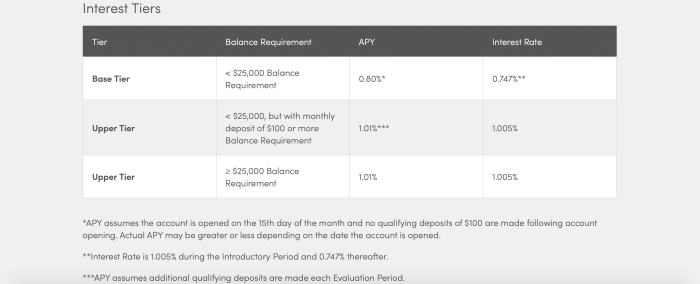How long does CIT Bank transfer take? That depends on several factors, making it crucial to understand the nuances of CIT Bank’s transfer system. This guide will explore the various transfer methods offered by CIT Bank, including internal transfers between your own accounts, external transfers to other banks via ACH or wire transfer, and the use of their mobile app.
We’ll delve into the typical processing times for each method, highlighting potential delays and providing strategies for a smoother experience. Understanding these factors will empower you to manage your finances efficiently and avoid unexpected delays.
From the speed of internal account transfers to the intricacies of international wire transfers, we’ll cover everything you need to know about how long your CIT Bank transfers will take. We’ll examine the impact of factors such as transfer type, day of the week, and even potential technical glitches. By the end of this guide, you’ll have a clear picture of what to expect and how to plan accordingly.
CIT Bank Transfer Times: A Deep Dive (with a Dash of Humor)
So, you’re wondering how long it takes to move your money around with CIT Bank? Let’s be honest, waiting for money is about as fun as watching paint dry (unless you’re a surprisingly enthusiastic painter). This guide will illuminate the often-murky world of CIT Bank transfer speeds, providing a realistic (and hopefully amusing) look at what you can expect.
So, figuring out how long a CIT bank transfer takes can be tricky, it depends on a lot of stuff. Sometimes I wonder about other banking things, like if I need a 529 plan for college, which made me check if does bank of america offer 529 plan , before getting back to figuring out my CIT transfer time.
Anyway, back to CIT – it usually takes a few business days, right?
Factors Influencing CIT Bank Transfer Speeds
Several factors can impact how quickly your money travels the digital highway. Think of it like a highway system; sometimes it’s a smooth, fast ride, and other times, you’re stuck in rush hour. These factors include the type of transfer (internal vs. external, ACH vs. wire), the time of day (weekends are notoriously slower), and even the whims of the banking gods (we kid…
mostly).
General Timeframes for Different Transfer Types

Source: mirrorreview.com
While exact times can vary, here’s a general idea. Internal transfers are usually the speediest, while wire transfers, though faster than ACH, often involve more paperwork (and thus, more waiting).
- Internal Transfers: Typically instantaneous or within minutes.
- External Transfers (ACH): Usually 1-3 business days.
- Wire Transfers: Same-day or next-day, depending on the receiving bank and processing times.
Scenarios Causing Delays in CIT Bank Transfers
Sometimes, things go sideways. Think of it as the banking equivalent of a plot twist in your favorite sitcom. Delays can be caused by incorrect account information, system glitches (those pesky gremlins!), bank holidays, or even unusually high transaction volumes (everyone decided to move their money at the same time!).
Internal CIT Bank Transfers: A Smooth Sailing Experience (Usually)
Moving money between your own CIT Bank accounts is generally a breeze. Think of it as an internal memo, only with significantly more zeroes.
- Log in to your online banking account.
- Navigate to the “Transfers” or “Move Money” section.
- Select the accounts involved and enter the transfer amount.
- Review and confirm the transfer.
Internal Transfer Speeds: Weekday vs. Weekend Showdown, How long does cit bank transfer take
| Day | Transfer Time |
|---|---|
| Weekday | Instantaneous or within minutes |
| Weekend | Usually processed the next business day |
External CIT Bank Transfers: ACH vs. Wire – The Great Race
When sending money to other banks, you have two main choices: ACH (like a slow but steady tortoise) and wire transfers (a speedy hare). Both have their pros and cons.
- ACH Transfers: Lower fees, but slower processing times (1-3 business days).
- Wire Transfers: Faster processing (same-day or next-day), but higher fees.
Potential Delays in External Transfers
Even the swiftest transfers can encounter a pothole or two. Bank holidays, incorrect routing numbers, or issues with the recipient bank can all contribute to delays. It’s like trying to navigate a city with unreliable GPS.
- Bank holidays
- Incorrect account information
- Technical issues with either bank’s system
- High transaction volume
Wire Transfers from CIT Bank: Speed Demons (with a Price Tag)
Wire transfers are the express lane of the banking world. They’re fast, but they come with a higher price tag. Think of it as the difference between taking a taxi and riding a bicycle; the taxi is faster, but it costs more.
- Log in to online banking.
- Locate the wire transfer option.
- Provide the recipient’s bank details (name, address, account number, routing number).
- Enter the transfer amount and your reference information.
- Confirm the transfer (and brace yourself for the fee!).
Information Required for a Successful Wire Transfer
To avoid delays, make sure you have all the necessary information: recipient’s full name, account number, routing number, bank name and address, and the purpose of the transfer (this helps with compliance).
Wire Transfer Fees from CIT Bank
Wire transfer fees vary depending on the amount transferred and potentially other factors. It’s best to check CIT Bank’s current fee schedule for the most accurate information.
ACH Transfers from CIT Bank: The Steady Eddie
ACH transfers are like the reliable friend who always shows up, albeit a little later than expected. They are cost-effective, but slower than wire transfers.
Typical Processing Time for ACH Transfers
Generally, ACH transfers from CIT Bank take 1-3 business days to process. This timeframe can be influenced by factors such as the receiving bank’s processing speed and any potential issues with the transaction details.
How ACH Transfers Work within the CIT Bank System
ACH transfers are processed through a network of banks and financial institutions. CIT Bank sends the transfer instructions to the network, which then routes the funds to the recipient’s bank. Think of it as a well-organized postal system for your money.
Common Issues Delaying ACH Transfers
- Incorrect account information
- Insufficient funds in the sender’s account
- Technical issues with either bank’s system
- Compliance issues
Mobile App Transfers via CIT Bank: On-the-Go Banking
CIT Bank’s mobile app allows for convenient money transfers. It’s like having your bank in your pocket (though we don’t recommend actually putting your bank in your pocket).
Mobile App vs. Online Banking Transfer Times
Transfer times using the mobile app are generally comparable to online banking. You should expect similar processing speeds for both methods, barring any unexpected technical glitches.
Scenario: Mobile App Transfer Failure & Troubleshooting
Imagine this: you’re trying to send money via the app, but it keeps failing. The dreaded error message appears. First, double-check your internet connection and ensure you have sufficient funds. If the problem persists, try restarting the app or your device. If all else fails, contact CIT Bank customer support for assistance.
They might need to investigate the issue from their end.
Customer Service and Support for Transfer Issues: Getting Help When You Need It

Source: co.za
If you’re experiencing delays or issues with your transfers, don’t panic! CIT Bank offers various customer support channels to assist you.
Contact Information for CIT Bank Customer Service

Source: listenmoneymatters.com
CIT Bank provides support through phone, email, and online chat. Their contact information can typically be found on their website.
Typical Response Time from CIT Bank Customer Service
Response times can vary depending on the method of contact and the volume of inquiries. However, CIT Bank generally strives to provide timely and helpful support to resolve transfer-related issues.
Outcome Summary: How Long Does Cit Bank Transfer Take
Successfully navigating CIT Bank transfers involves understanding the various options available and the factors influencing processing times. While internal transfers are generally swift, external transfers, particularly wire transfers, can take longer. Proactive planning, such as initiating transfers well in advance of deadlines and understanding the potential for delays due to holidays or technical issues, is key. Remember to utilize CIT Bank’s customer support channels if you encounter any issues.
By being informed and prepared, you can ensure a smooth and efficient transfer experience every time.